 |
|
|
||||
| Info Home | ||
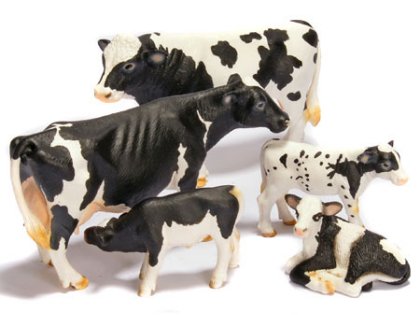 Holstein Cows 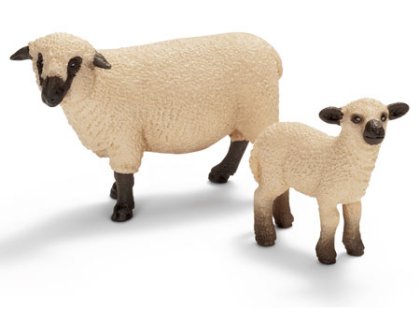 Shropshire Sheep 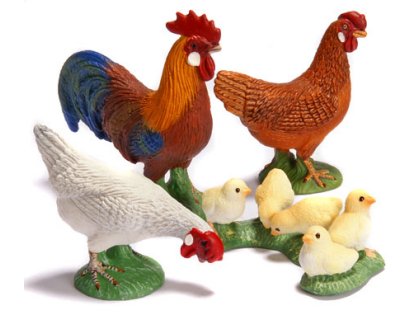 Chickens 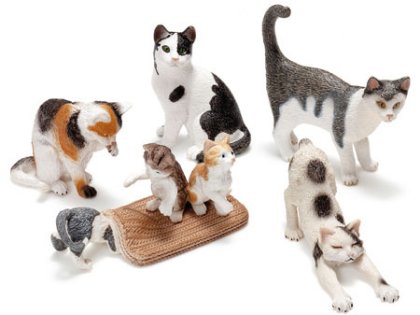 Cats 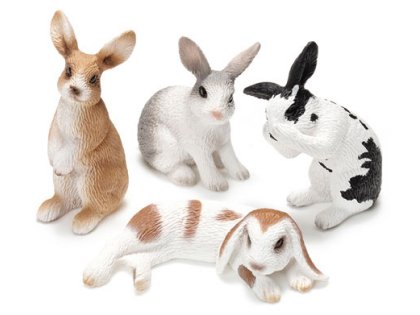 Rabbits |
Schleich Farm Life Figures Schleich Figures have been in production since the 1980's and are now the leading animal collectable replica in the world. The models are all true to life and each meticulously hand painted. Schleich products are all made in compliance with all safety regulations. The Schleich Farm Life Range consists of animals from all over the world, from cats and rabbits through to horses and alpacas! Shropshire Sheep (Ovis aries) Shropshire sheep are an old English domesticated breed with a light-coloured coat and a dark-coloured head. Because of their funny appearance, Shropshire sheep have been made into heroes of various children's series for quite some time. They have amusing adventures as clay figurines. Shropshire sheep are an old English domesticated breed with a light-coloured coat and a dark-coloured head. These animals are very low-maintenance which is why they're very popular with the farmers. Farmers happily let them graze amongst fruit and conifer crops since they don't chew up the young shoots. Cattle Holstein (Bos primigenius) Holstein cows are black and white bovines that chew the cud, and chew and chew. A Holstein cow produces almost thirty-six quarts of milk per day. Holstein bulls and cows are the most popular breed of cattle in the world. They were first bred in The Netherlands and then brought to America in 1857. Holsteins are immediately recognizable by their black and white coloring -- the stereotypical farm bull and cow. Today farmers raise Holsteins for their amazing milk-producing ability: the average cow produces 3,250 gallons of milk a year! They live three to four years, but some have been known to live much longer. Cattle have four stomachs. They graze on a combination of grasses and hay; once the food passes through their first stomach, it's called cud. This cud gets pushed back into their mouth, and the cattle chew on it all day until it is ready to go through the other three stomachs. It almost looks like they're chewing gum! Chickens (Gallus gallus) Varying in color according to age and gender, chickens are feathered in browns, whites, and creams. Internationally, there are more chickens than any other fowl. Popular for their eggs and meat, chickens can be housed at a home, at a farm or by the thousands. For its health benefits and supply, chicken is consumed across the globe. As omnivores, chickens eat insects, seeds, and even mice and lizards. Throughout a three week long incubation, hens incubate and rotate their eggs, fertilized or not. Living up to a decade, chickens generally stay on land but have been known to fly in short bursts. As a flock, chickens abide by a pecking order. This way, the dominant birds always get first choice. Cats (Felis catus) Striped or solid, cats are felines with bright eyes and a long tail. Cats have thirty-two muscles in each ear that allow them to move their ears independently. Companions for humans, cats have a long history of relationships. Several millennia are marked with feline loyalty. Although cats are the cause of allergy flare-ups, they are not a cause of harm for humans. Generally weighing between five and fifteen pounds, cats have a height and body length close to one foot. With specialized teeth, tongue, and ears, cats can use body language to communicate their mood. Their teeth are made for eating meat. Their tongue is barbed to aid in grooming and helps to spread their own natural deodorant. Their ears are able to detect high pitched sounds. Cats have more sensitive senses than humans and often sleep more to store energy. Rabbits (Oryctolagus cuniculus) Found in different color combinations, rabbits are known for their long ears and puffy tails. A rabbit's wool is five times warmer than that of a lamb. Popular as pets, especially around Easter, rabbits are divided into almost fifty species. The staple food of a rabbit's diet is hay, and these furry friends also need a constant water supply. Able to withstand cold temperatures, rabbits can be indoor or outdoor pets. Living for about a decade, rabbits are social animals that are prone to getting nervous easily and biting wires or objects near its dwelling. Able to be trained, rabbits enjoy games and can recognize their name with practice. Pigs (Sus scrofa) Pink and pudgy, pigs are prized for pork and pot-bellies. Pigs often have a higher ability to be trained than cats or dogs. Originally domesticated in Southwest Asia, China, and Europe, pigs were valuable and easy to please thanks to their adjustable nature and status as omnivores. For meat, bristles, and skin, pigs were profitable in farming. Currently, in some countries, pigs help in finding truffles with their sensitive snouts. In other countries, people keep pigs as pets, raising them indoors or outdoors. Still popular for food, products include bacon, sausage, ham, head cheese, and more. Arabian (Equus ferus) Wearing rich tones of black, gray, bay or chestnut, Arabian horses are a pleasure to behold. In competition, Arabians can traverse one hundred miles in a day. Prized and raised by Bedouins, Arabians lived with families in the desert, sometimes even sleeping inside their tents! Today, these distinguished horses are easily recognizable by their tail carriage and head shape. Almost any horse breed can trace its roots back to an Arabian bloodline as Arabians were bred to benefit other breeds with their capability for speed and endurance as well as their predisposition to healthy bones. In terms of temperament, Arabians boast quick learning and agreeability coupled with vigilance and spirit. Known as 'The Versatile Arabian,' this breed is often awarded at endurance competitions and is a popular breed worldwide. Dalmatian (Canis familiaris) Dalmatians are spotted canines ready to sound the alert. The hairs in a Dalmatian's coat are barbed, making them stick to almost any type of fabric. Dalmatians are named after the region they're from -- Dalmatia, an area in Croatia along the Adriatic Sea. Puppies are completely white when they're born. They develop their own unique pattern of dark brown or black spots within a few weeks. Eye color may be brown, blue, or a combination thereof. Ten percent of Dalmatians are born deaf, but that doesn't stop them from doing their jobs: for thousands of years Dalmatians worked as carriage dogs-they walked alongside horse-drawn chariots and then carriages, encouraging the horses to move forward. Before the motorized car was invented, fire trucks were actually just horse-drawn vehicles, and the Dalmatian urged the horses to run as fast as they could to the blazing fires. Nowadays, they're just along for the ride. Alpacas (Lama pacos) Alpacas, originally from the Andes of South America, are a domesticated type of camel which is now raised in Europe for its wool. Alpacas come in many colours. They run the gamut from white to various shades of brown to black. Of course, there are also spotted Alpacas. Alpacas, originally from the Andes of South America, are a domesticated type of camel which is now raised in Europe for its wool. There are two types of Alpacas: Huacaya and Suri. The former have fine, crimped hair, the latter curly and straight strands. Like all camels, Alpacas also have a three-part stomach and a gummy plate in the upper jaw instead of incisors. Falabella (Equus ferus) Resembling its relatives in miniature, Falabellas wear spots and solids. Falabellas are about as tall as average yard fences. Hailing from South America, the Falabella stands proudly as one of the smallest miniature horses. A mix of bloodlines originally descending from Iberian breeds, the Falabella is named after one of its breeders. Proportioned similar to its progenitors, Falabellas have a glossy coat and a slender frame. These miniature horses are shown in hand and driving carts. Adhering to standards, these miniatures measure approximately thirty inches. At birth, foals are only eight inches tall but reach their adult height in just two years! Ducks (Anas platyrhynchos) Found feathered in white or other hues, the plumage of ducks is always handsome. Only female ducks quack. Preferring the water to land, ducks are often found feeding in flocks to avoid predators. Prepared for fair or foul temperatures, these birds keep their feathers well-oiled and waterproofed, wearing an insulating layer of down underneath. This way, they can fulfill their omnivorous diet requirements in any season. To aid in eating, many ducks have specialized bills built with ridges or filters called lamellae. Nesting near the water's edge, ducks like to hide among bushes. Cattle Scottish Highland (Bos primigenius) Surveying the countryside for greens to graze, Scottish Highland Cattle stand with a long coat and long horns. Keeping warm under wavy fur, this breed of cattle is known for lean meat. Found in folds instead of herds, Scottish Highland cattle were first bred in the country with which it shares its name. Developed from reddish and black stock, this breed can be seen with black, yellow, red, or a mixture of fur colors. Originally living in a harsh climate, Scottish Highland cattle are prized for their hardiness and willingness to eat what other cattle avoid. Today, these cattle can be seen on many continents including Australia and America. Cattle Scottish Highland (Bos primigenius) Stunning in strength and beauty, Clydesdales strut their white dipped legs. Clydesdales can weigh over one ton. From its namesake in Scotland, the Clydesdale is a breed of draft horses, able to pull loads and often seen today in parades. Used in pulling timber from forests, these horses are currently familiar as mascots of beverage companies. Known for being well-built, Clydesdales generally stand sixteen or seventeen hands high but have been measured at twenty. At birth, foals weigh around two hundred pounds, gaining almost five pounds per day in its first months! To ensure nutrition and health, a mother mare will produce almost sixty pounds of milk per day for her foal. Although sizeable, this breed possesses marked grace and docility. Clydesdale (Equus ferus) Stunning in strength and beauty, Clydesdales strut their white dipped legs. Clydesdales can weigh over one ton. From its namesake in Scotland, the Clydesdale is a breed of draft horses, able to pull loads and often seen today in parades. Used in pulling timber from forests, these horses are currently familiar as mascots of beverage companies. Known for being well-built, Clydesdales generally stand sixteen or seventeen hands high but have been measured at twenty. At birth, foals weigh around two hundred pounds, gaining almost five pounds per day in its first months! To ensure nutrition and health, a mother mare will produce almost sixty pounds of milk per day for her foal. Although sizeable, this breed possesses marked grace and docility. |
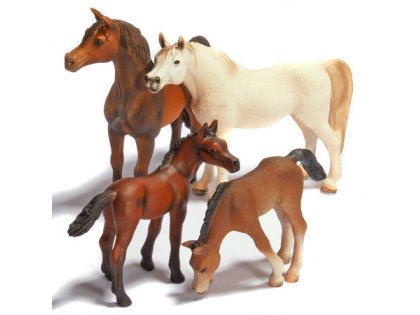 Arabian Horses 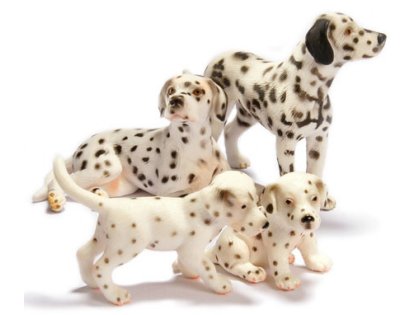 Dalmations 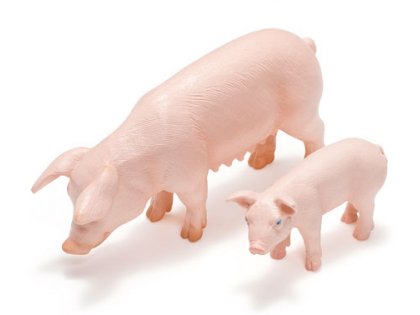 Pigs 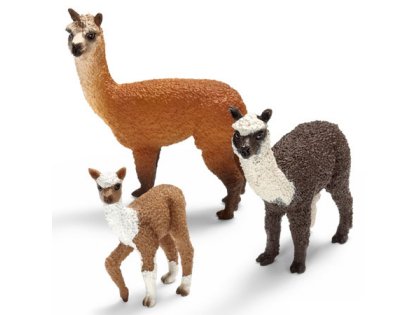 Alpacas 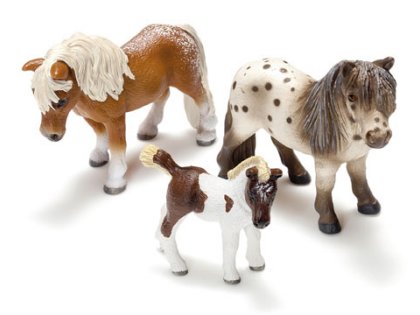 Falabellas |
 |
|
|
||||||||||